The Original Cotton Candy
This is a guest post written by Josh, a travel blogger and photographer at The Art of Wayfaring, a blog and guide for all things Turkey!
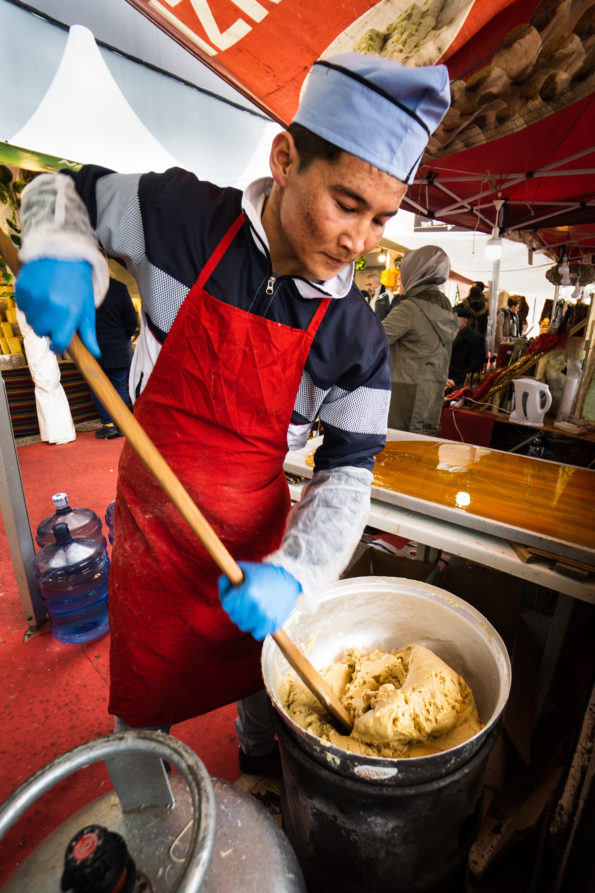 It wasn’t long after I had arrived in Turkey that I first discovered pişmaniye, Turkey’s traditional sweet resembling a blend of wool and cotton candy. It’s hard to miss the sugary treats, lightly pressed into little balls, gracing the shelves of bus stop and airport shops all over the country. No tourist shop is complete without stacks of gift boxes stuffed with pişmaniye.
It wasn’t long after I had arrived in Turkey that I first discovered pişmaniye, Turkey’s traditional sweet resembling a blend of wool and cotton candy. It’s hard to miss the sugary treats, lightly pressed into little balls, gracing the shelves of bus stop and airport shops all over the country. No tourist shop is complete without stacks of gift boxes stuffed with pişmaniye.
While pişmaniye (pronounced peesh-man-ee-yeh) was familiar to me, it wasn’t until I came across a street market stall where they made it fresh that I first wondered how they spun sugar into a wool like texture before the era of machines that gave us cotton candy in the West.
But first, what is pişmaniye? To put it simply pişmaniye is a bit like cotton candy; it’s a sugar strand sweet resembling raw cotton or wool. Pişmaniye, in Turkish comes from the Farsi word Pashmak meaning to be wool-like. The Turkish word pişmaniye, however, resembles the word pişman meaning regret. This is where the saying “eat pişmaniye and you will regret it once, don’t eat pişmaniye and regret it a thousand times” comes from. Not sure why you’d regret eating pişmaniye though. Maybe it’s because you’re likely to make a mess of yourself.
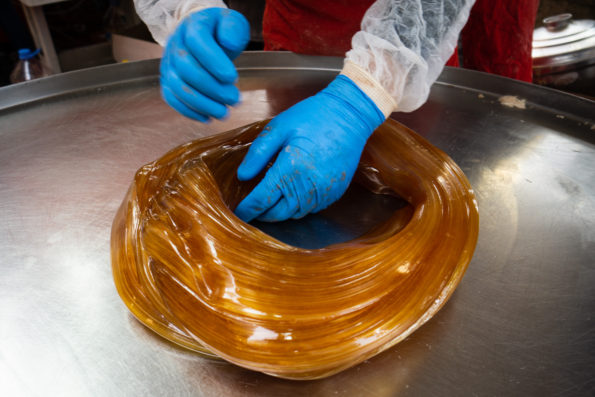 According to most sources, pişmaniye was brought to Turkey by an Armenian master who settled in Izmit, not far from Istanbul, where he started a business that forever connected the province of Izmit with the treat. If you drive though Izmit today you will see endless pişmaniye shops along the road selling the famous Izmit pişmaniye.
According to most sources, pişmaniye was brought to Turkey by an Armenian master who settled in Izmit, not far from Istanbul, where he started a business that forever connected the province of Izmit with the treat. If you drive though Izmit today you will see endless pişmaniye shops along the road selling the famous Izmit pişmaniye.
The main differences between cotton candy and pişmaniye are in taste and heaviness and come from the preparation process. The difference in flavor is mostly from the taste of the cooked flour and the added taste of chocolate or vanilla (depending on the variety). If you pressed cotton candy together it would clump, melt, and stick. The fact that flour is used in pişmaniye allows it to be pressed into a mold and so isn’t as fluffy as cotton candy.
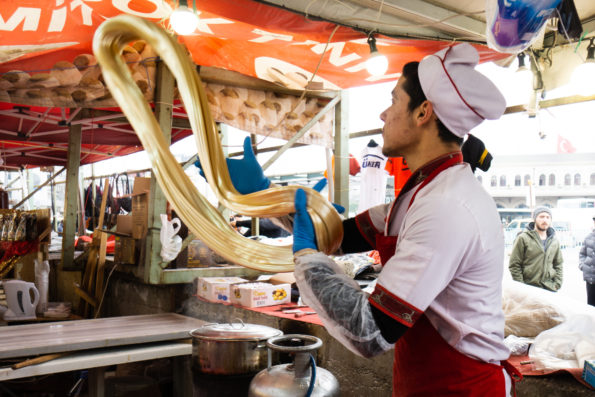 The first step to make pişmaniye is to boil a vat of sugar. Once it has boiled it’s poured out onto a marble slab where it cools into a malleable, gummy texture. While the melted sugar cools, flour and butter are roasted until lightly browned.
The first step to make pişmaniye is to boil a vat of sugar. Once it has boiled it’s poured out onto a marble slab where it cools into a malleable, gummy texture. While the melted sugar cools, flour and butter are roasted until lightly browned.
The next step is to work the stiffening sugar into a ring. The ring is pulled into a widening loop, folded onto itself and stretched again. This process is repeated a number of times on the table as well as in the air using gravity to stretch the ring of sugar.
Then the paste of flour is added, and the real work begins. The process is similar; stretching, folding stretching, and folding. The main difference now is that the buttery flour keeps the ever-narrowing loops of sugar from sticking to each other and so as the process continues the strands become more and more fine until finally, they take on a wool like texture. The process is quite labor intensive and very repetitive. The guys that I met working at the stall are there from morning till midnight boiling, stirring, pulling, folding, and finally packaging.


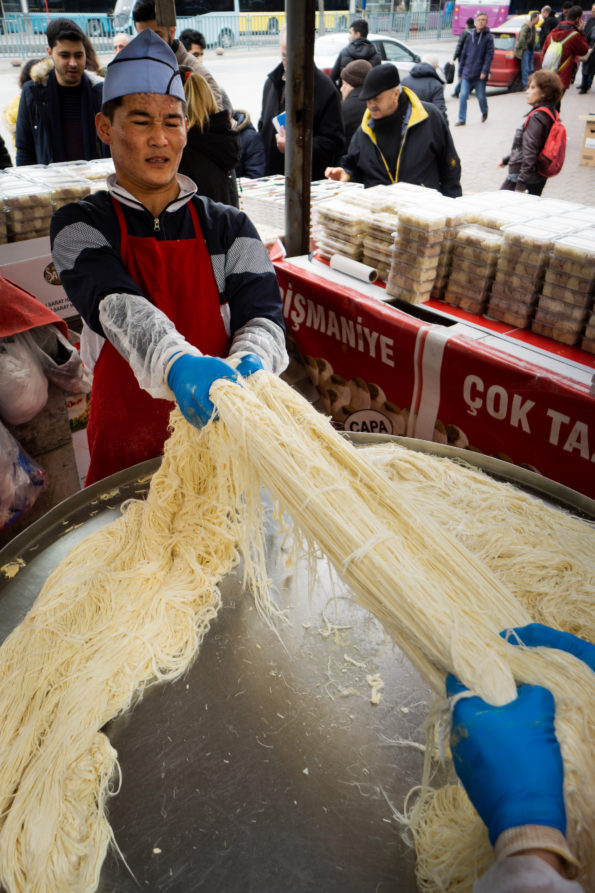
Once the sugar has finally begun to resemble shaggy wool, balls are gently pressed into small cup-like molds to create individual treats ready for eating!
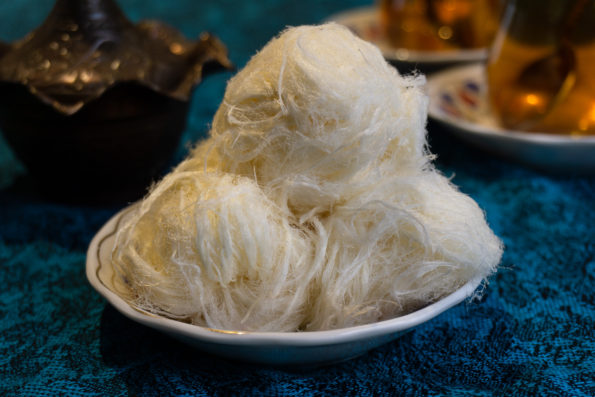
This is a guest post written by Josh, a travel blogger and photographer at The Art of Wayfaring, a blog and guide for all things Turkey!



Leave a Reply